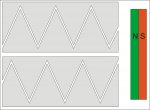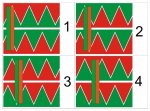- Joined
- Oct 27, 2008
- Messages
- 169
- Points
- 0
All bluray sleds these days have a small micro stepper motor that uses a screw drive to move a lens assembly. You can see it in the lower left corner on this 12x sled.
The motor appears to be a bipolar stepper motor (thats why they have 4 leads) and likely works similarly to the larger stepper motors that move the actual sled inside the bluray drive.
I am wondering if anyone here has tried to do anything with these motors for a spiro or some sort of micro scanner. The motors are pretty small but seem to at least be designed to make very small, accurate, and fast steps.
I have two 6x sleds on the way to the house and i plan to disassemble them with careful attention paid to the motor and its circuitry. My hope is that the existing circuitry may be used to compactly control this motor, we'll see.
The motor appears to be a bipolar stepper motor (thats why they have 4 leads) and likely works similarly to the larger stepper motors that move the actual sled inside the bluray drive.
I am wondering if anyone here has tried to do anything with these motors for a spiro or some sort of micro scanner. The motors are pretty small but seem to at least be designed to make very small, accurate, and fast steps.
I have two 6x sleds on the way to the house and i plan to disassemble them with careful attention paid to the motor and its circuitry. My hope is that the existing circuitry may be used to compactly control this motor, we'll see.










